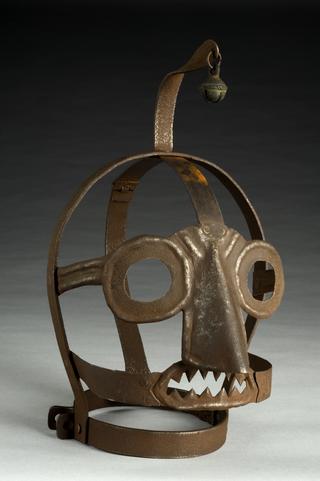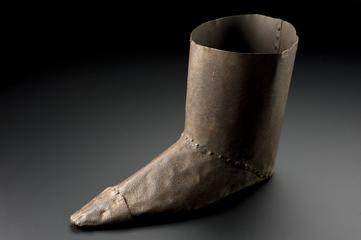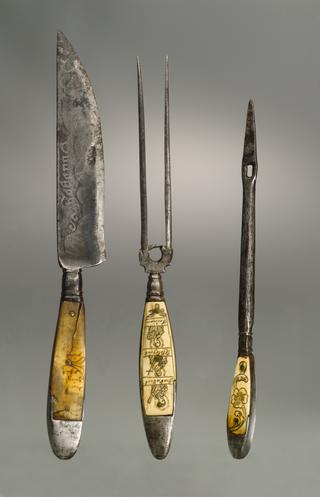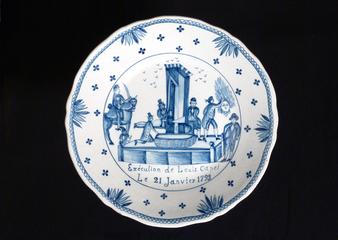
Handcuffs, composed of two hide cuffs joined by bronze ring
- Made:
- 1701-1900 in unknown place
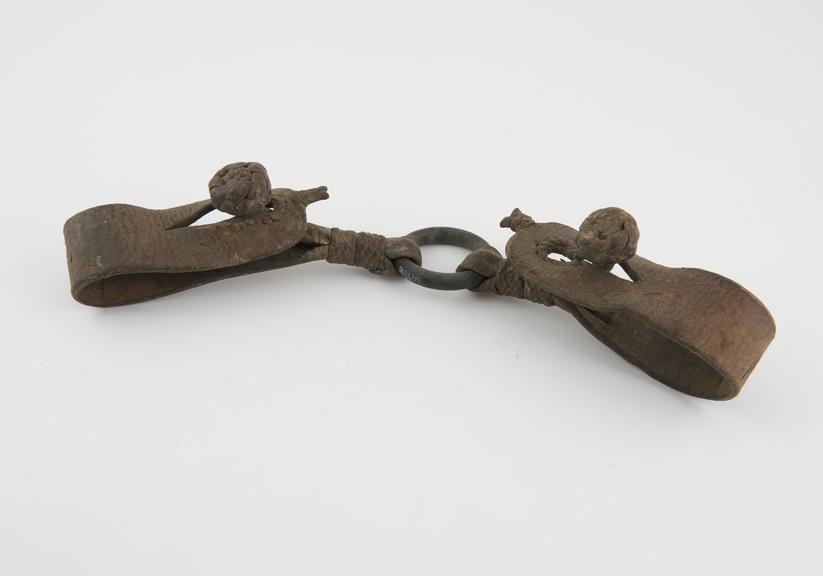
Handcuffs, composed of two hide cuffs joined by bronze ring, provenance unknown, 1701-1900
Handcuffs are almost synonymous with modern punishment, but they are not a modern invention. The first recorded mention of wrist restraint is in Greek mythology: in Virgil’s poetry from 70BC where he discusses preventing Proteus from shape shifting. The earliest metal handcuff examples date from the Bronze and Iron ages, and there have been many different designs throughout the years, with over 3000 search results coming up for handcuffs since 1860 on the European patent office’s website.
This set of handcuffs shows an alternative to the metal handcuffs we know today. It is almost impossible to date when metal handcuffs and manacles first became commonplace, but it is possible that animal hide or other strong non-metal materials such as rope, or vine were used when metal wasn’t an option. This might have been due to availability, affordability or time and design limitations. You can see prisoners restrained with rope or other organic materials in some Egyptian reliefs.
Details
- Category:
- Wellcome (general)
- Collection:
- Sir Henry Wellcome's Museum Collection
- Object Number:
- A126218
- Materials:
- cuffs, leather and rubg, bronze
- type:
- handcuffs
- credit:
- Glendining

